Succulents are a popular choice among plant enthusiasts for their low-maintenance nature and diverse aesthetics. While succulents are the ideal indoor plant, many plant lovers in Northern climates would love to see these desert delights in their outdoor gardens.
Fortunately, there are several cold hardy succulents that will survive outdoors, even in areas with frigid winters and subzero temperatures.
In this article, we’ll cover 12 cold hardy succulents for winter gardening. Keep in mind these genera have a wide array of species, including many that aren’t resistant to the cold. Be sure to look at the recommended species and your USDA zone before planting.
Additionally, many of these cold hardy succulents don’t perform well in wet areas. Ensure your succulents have well-draining soil and use covers as needed to prevent root rot.
Let’s dig in!
Agave

Some agave species grow in cool, temperate regions in Mexico.
©iStock.com/Sckrepka
Agave succulents are best known for their role in tequila production. However, this versatile genus contains several agave species that will grow in cold environments and survive outdoors in the winter. Some popular options include:
- Harvard Agave (Agave havardiana) – USDA zones 5-10
- Parry’s Agave (Agave parryi) – USDA zones 5-10. Look for cultivars: Agave parryi v neomexicana, Agave parryi v huachucensis, and Agave parryi v couesii.
- Schott’s Century Plant (Agave schottii) – USDA zones 6-10.
- Utah Agave (Agave utahensis) – USDA zones 5-10
Many outdoor agaves in Northern climates succumb to moisture and root rot rather than the cold. Ensure you have well-draining soil, and consider creating a microclimate for your agaves.
Dasylirion
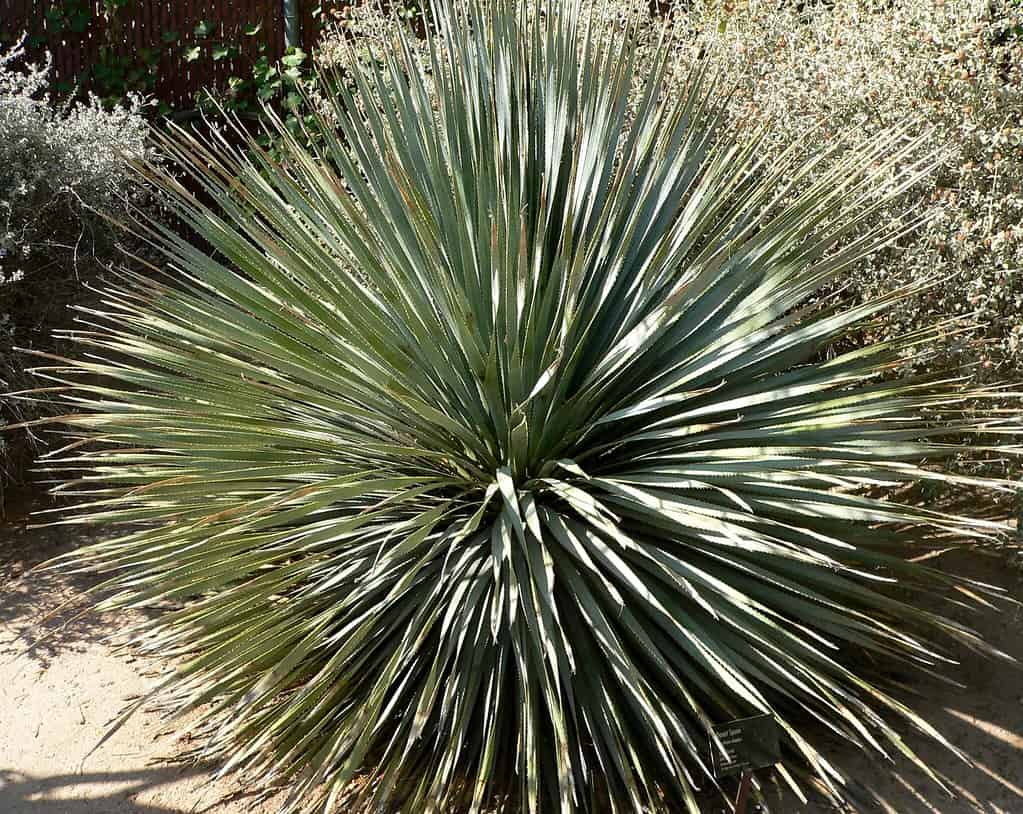
Dasylirion succulents grow in rocky, mountainous areas.
©Stan Shebs, CC BY-SA 3.0 , via Wikimedia Commons - License
The Dasylirion genus is often overlooked when planting cold hardy succulents. Its spiky fronds and large growth habit make it an ideal landscaping succulent. The best cold hardy Dasylirions include:
- Texas Sotol (Dasylirion texana) – USDA zones 5-11
- Common Sotol (Dasylirion wheeleri) – USDA zones 6-10
These eccentric plants are often confused with Yucca, another cold hardy succulent ideal for winter gardening.
Delosperma
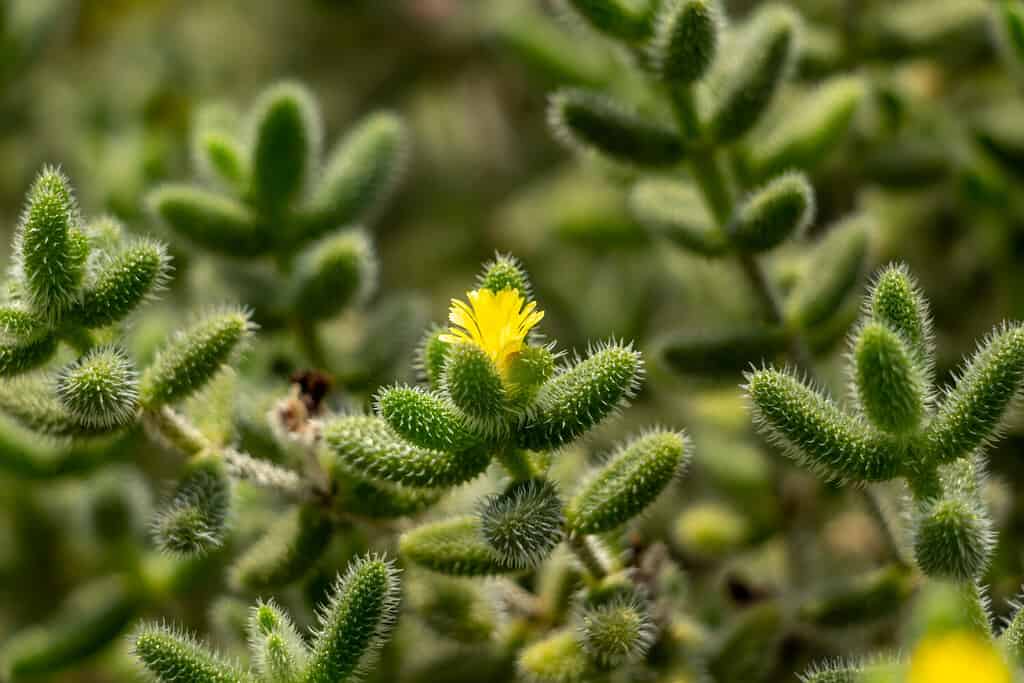
Also known as Ice Plants, Delosperma grow in mountainous regions in
Africa
.
©lennykaiser/Shutterstock.com
The Delosperma genus is often called Ice Plants due to its cold resilience. These beautiful flowering succulents also provide great ground cover. The most popular options for winter gardening include:
- Lavender Ice (Delosperma ‘Psfave’) – USDA zones 5-8
- Jewel of the Desert(Delosperma ‘Jewel of the Desert’) – USDA zones 5-8
- Firespinner® (Delosperma ‘Fire Spinner®’) – USDA zones 5-8
Unlike other succulents on this list, Delosperma thrives in cold winter environments. They require a decent cold period to bloom during the growing season.
Escobaria

Also known as a Purple Pincushion,
Escobaria viviparais one of the most popular cold hardy cacti.
©BT Images/Shutterstock.com
Escobaria is a genus of cacti known for their cold hardiness and resilience. Some of the best Escobarias for winter gardening include:
- Purple Pincushion (Escobaria vivpara) – USDA zones 4-9
- Sneed’s Pincushion (Escobaria sneedii) – USDA zones 4-9
- Missouri Foxtail Cactus (Escobaria missouriensis) – USDA zones 4-9
These cold hardy succulents perform well in areas with heavy snowfall, as they provide insulation against the cold. If you live in an area without ample snow, cover your cacti to prevent frostbite.
Lewisia
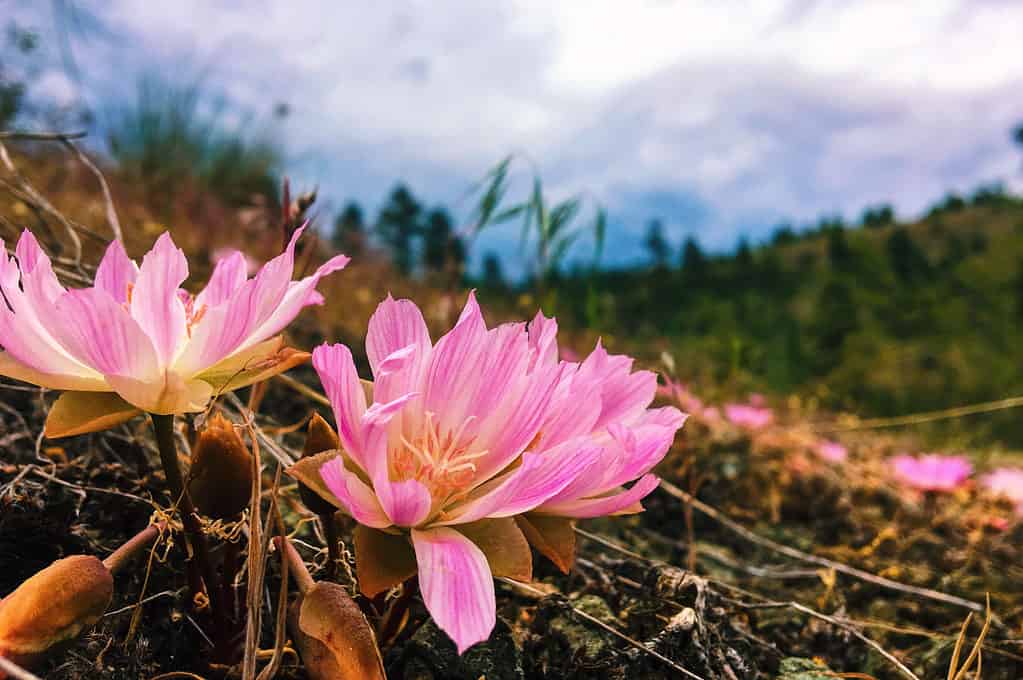
Lewisia succulents are more resilient to wet winter climates.
©Veronika Gaudet/Shutterstock.com
Also known as Bitterroot, Lewisia is a flowering succulent species that grows as far north as Calgary, Canada. The majority of this genus is cold hardy, providing plenty of options to choose from. Some fan-favorites include:
- Siskiyou Lewisia (Lewisia cotyledon) – USDA zones 3-9
- Rainbow Lewisia (Lewisia cotyledon ‘Rainbow’) – USDA zones 5-8
Though these cold hardy succulents are more resilient to dampness than others, they still require well-draining soil.
Opuntia

You may know Opuntia by its common name, Prickly Pear.
©KanphotoSS/Shutterstock.com
Opuntia, also known as Prickly Pear, is a low-maintenance succulent genus with several cold hardy species. Some of the top picks include:
- Eastern Prickly Pear (Opuntia humifusa) – USDA zones 4-9
- Brittle Prickly Pear (Opuntia fragilis) – USDA zones 4-9
Provide a pot or plot with ample drainage to prevent root rot in wet winter climates.
Orostachys
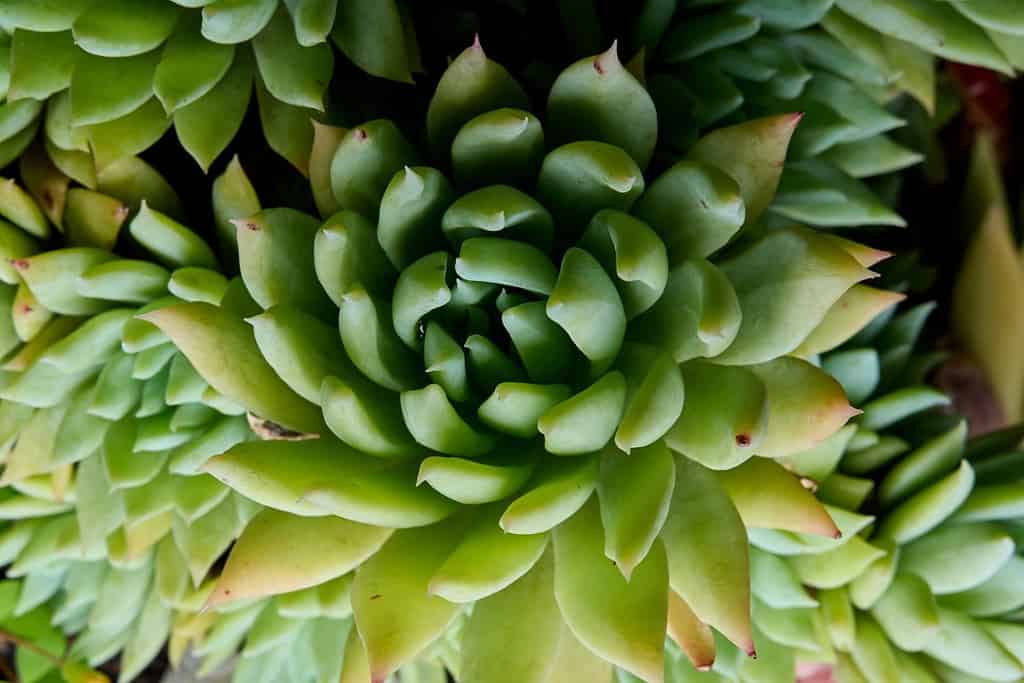
Orostachys is often compared with Echeveria in appearance.
©Reverso Fotografia/Shutterstock.com
The oft-overlooked Orostachys genus is a stunning, cold hardy alternative to Echeveria succulents. These resilient succulents grow throughout Asia, even making a home in Mongolia and surviving temperatures as low as -40°. Top species include:
- Green Duncecaps (Orostachys malacophylla) – USDA zones 4-9
- Chinese Duncecaps (Orostachys Boehmeri) – USDA zones 5-9
Plant in a space with ample airflow to help offset humidity levels and provide well-draining soil.
Rosularia

Some Rosularia species grow in the Himalayas.
©pticelov/Shutterstock.com
Rosularia is another lesser-known cold hardy succulent with several species able to withstand frigid temperatures—some even grow in the Himalayas. If a succulent can survive Everest, it can (hopefully) survive your garden. Cold hardy species include:
- Rosularia platyphylla – USDA zones 5-10
- Rosularia sedoides – USDA zones 5-10
- Rosularia Prometheum – USDA zones 5-9
These cold hardy succulents prefer dry winter environments and rocky soil.
Ruschia

Ruschia succulents are closely related to Delosperma.
©CarlosHerrerosfotografia/Shutterstock.com
Another Ice Plant, Ruschia is closely related to Delosperma. Both of these cold hardy succulents grow in mountainous regions in South Africa. At a glance, these genera are identical. However, scientists have discovered subtle differences in their leaf and seed growth. Cold hardy Ruschia succulents include:
- Globe Ice Plant (Ruschia punctulata) – USDA zones 6-10
- Shrubby Ice Plant (Ruschia indurata) – USDA zones 5-10
Plant these succulents in rocky soil in colder USDA zones for favorable results.
Sedum
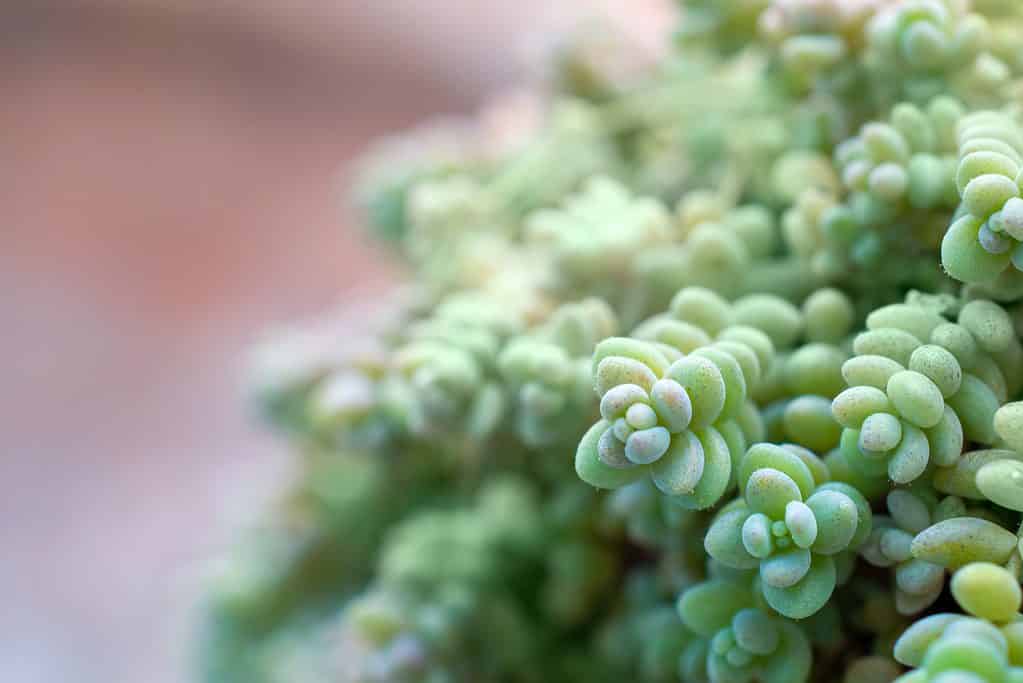
Sedum is a popular cold hardy succulent plant.
©Pickless/Shutterstock.com
Sedums are one of the most popular options for winter gardening, with endless species to choose from. Some popular options include:
- Lime Twister (Sedum ‘Lime Twister’) – USDA zones 4-9
- Frosty Morn (Sedum erythrostictum ‘Frosty Morn’) – USDA zones 3-9
- Dream Dazzler (Sedum ‘Dream Dazzler’) – USDA zones 4-9
These beginner-friendly succulents are said to thrive on neglect but do best with well-draining soil.
Sempervivum
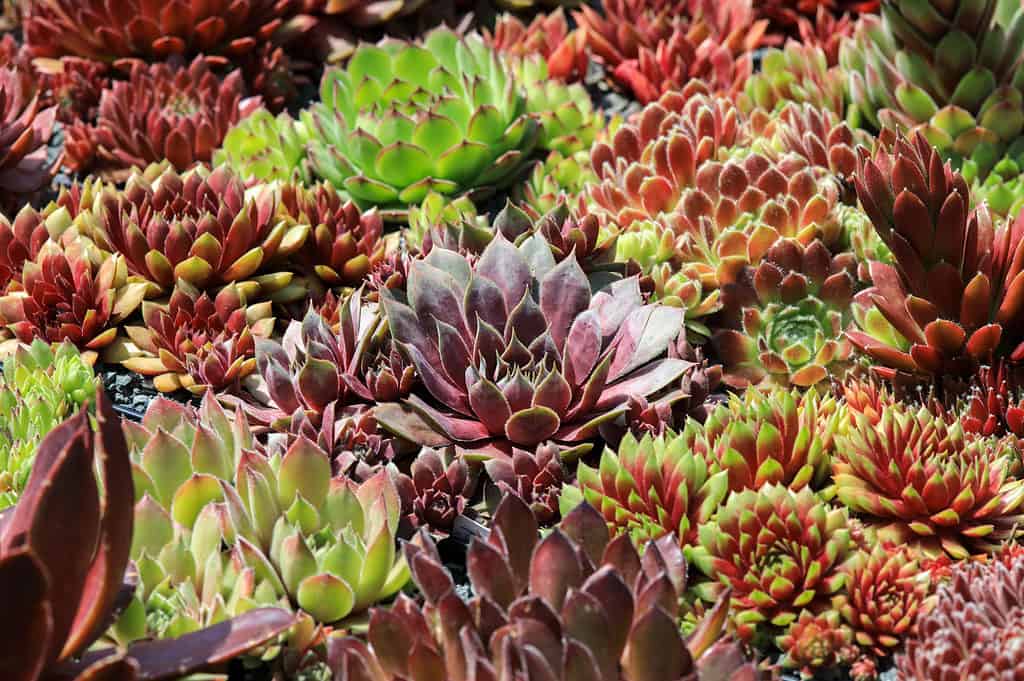
Sempervivums, also known as houseleeks, are another popular choice for winter gardening.
©MaCross-Photography/Shutterstock.com
The Sempervivum genus is another cold hardy succulent option for winter gardening. Like sedums, these succulents are low-maintenance and thrive on neglect. Some popular options include:
- Common Houseleek (Sempervivum tectorum) – USDA zones 3-9
- Cobweb Houseleek (Sempervivum arachnoideum) – USDA zones 5-8
- Lilac Time (Sempervivum ‘Lilac Time’) – USDA zones 4-9
Provide these succulents with well-draining soil, and watch as they produce pups and grow!
Yucca
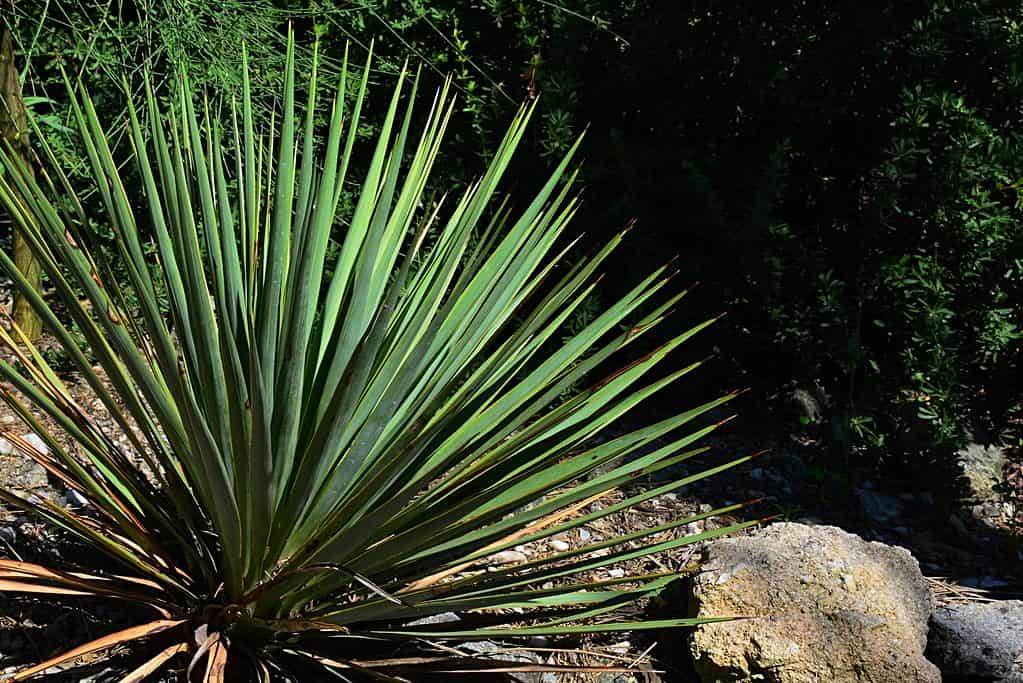
Yucca has a stunning, spiky appearance that looks great in gardens.
©ZayacSK/Shutterstock.com
Not all Yucca succulents are cold hardy, but there are a few resilient species to choose from. The best options include:
- Banana Yucca (Yucca baccata) – USDA zones 4-10
- Chaves Torrey’s Soapwort (Yucca torreyi ‘Chaves’) – USDA zones 5-10
- Small Soapweed (Yucca glauca) – USDA zones 3-8
Some of these plants even grow in the Northern regions of Canada. However, they prefer a dry environment.
The photo featured at the top of this post is © Veronika Gaudet/Shutterstock.com
Thank you for reading! Have some feedback for us? Contact the AZ Animals editorial team.






